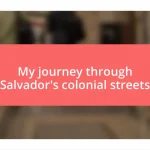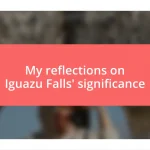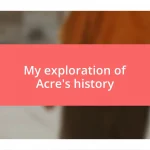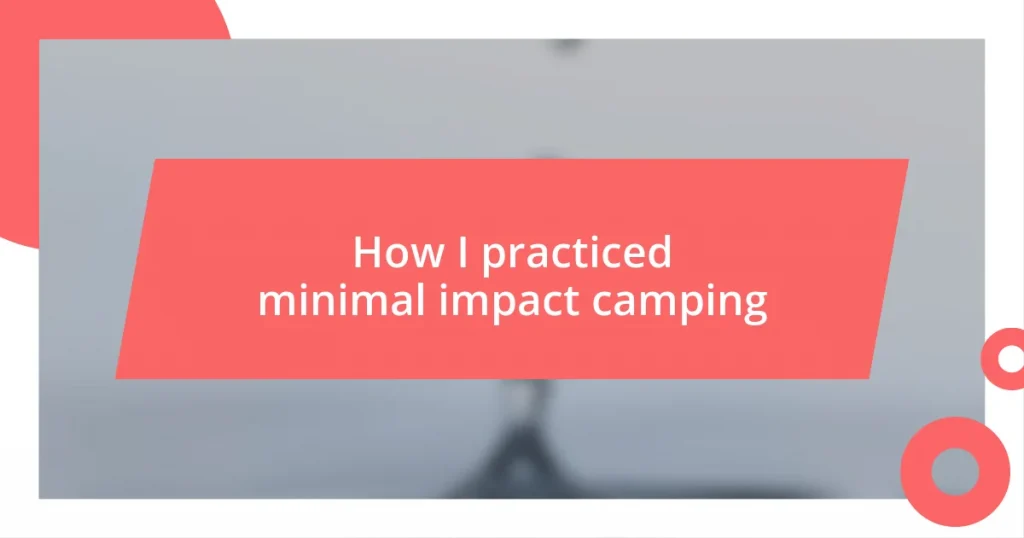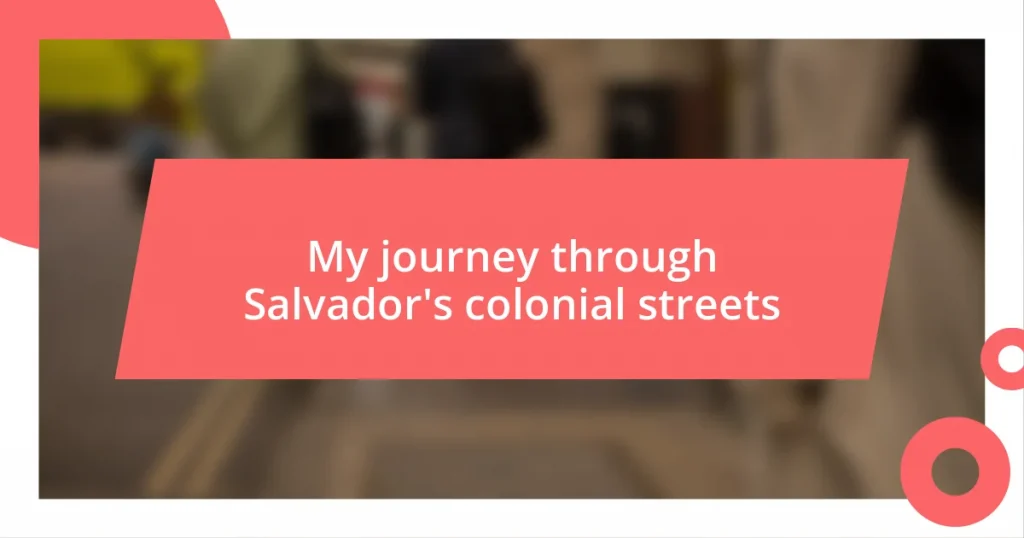Key takeaways:
- Embrace the “Leave No Trace” philosophy to preserve natural beauty and minimize environmental impact while camping.
- Plan responsibly by researching locations, packing light, and choosing established trails to protect ecosystems.
- Utilize alternative practices for campfires, such as solar lanterns, and ensure proper fire safety to maintain the integrity of outdoor spaces.
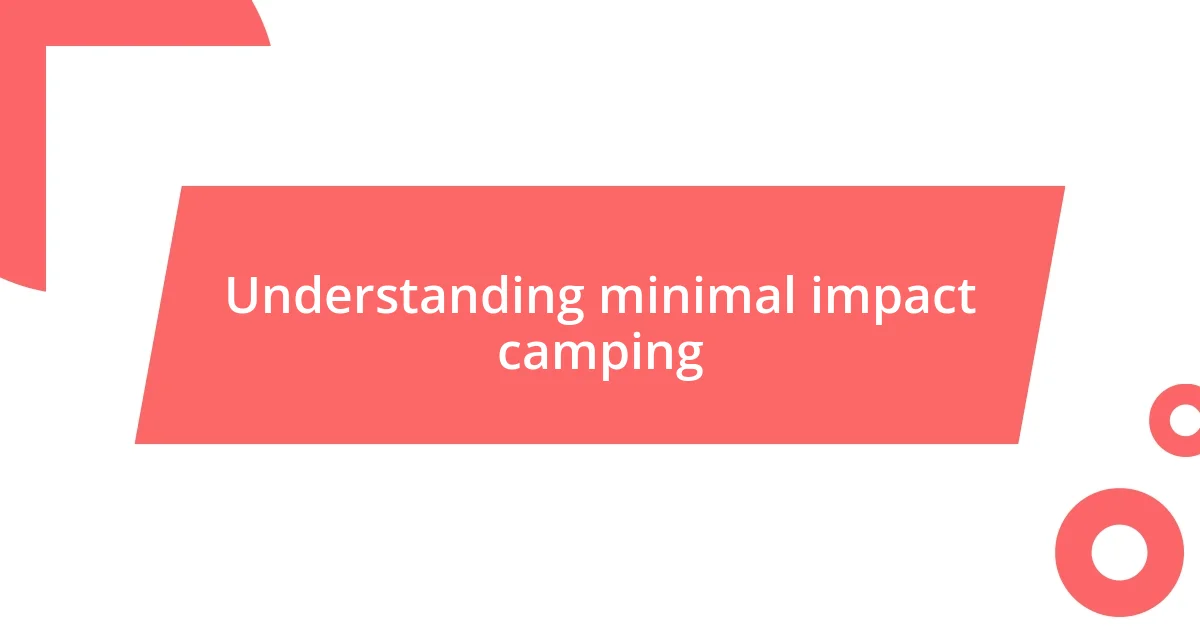
Understanding minimal impact camping
Understanding minimal impact camping is all about respecting nature while enjoying the great outdoors. I remember my first experience trying to be a responsible camper; I was struck by the beauty of untouched wilderness but also realized how fragile it could be. It made me think: how can I enjoy my adventures without leaving a heavy footprint behind?
One key principle is the “Leave No Trace” philosophy, which encourages us to take only photographs and leave only footprints. I once set up camp in an area where we could barely see signs of other visitors—no trash, no disturbed soil, just pure beauty. It felt incredible to know that our presence wouldn’t tarnish the landscape for others, and it sparked a fire in me to share these practices with friends who often overlook the impact of their outings.
I often ask myself, what legacy do I want to leave on the trails I love? It’s about more than just having fun; it’s also about keeping these natural treasures intact for future generations. Each time I pack my gear, I double-check if I’m doing my part and minimizing waste—simple things matter, like using biodegradable soap and picking up my trash. Reflecting on those moments really deepens my connection to nature and those I share the journeys with.
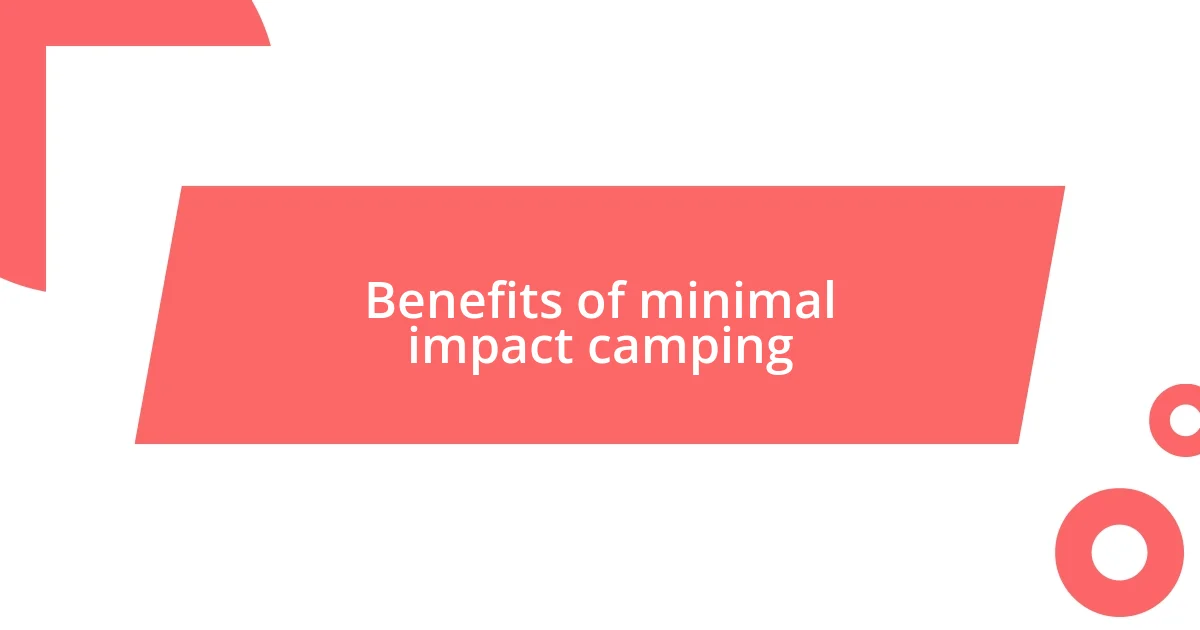
Benefits of minimal impact camping
The benefits of minimal impact camping extend beyond preserving nature; they also provide a more enriching experience. When I first adopted this practice, each camping trip transformed into a mindful retreat, allowing me to connect deeply with my surroundings. I discovered that camping with minimal impact often means fewer distractions—like the sounds of rustling leaves or the gentle flow of a nearby stream—which enhances my overall experience of serenity and peace.
Here are some notable benefits:
- Preservation of natural beauty: Protecting landscapes ensures that the idyllic sites remain for generations.
- Enhanced mental clarity: A focused and reduced environment can lead to deeper reflection and appreciation for the wilderness.
- Community and camaraderie: Joining like-minded campers fosters a sense of shared responsibility, uniting us in our goal to protect nature.
- Lower environmental footprint: It’s a practical way to reduce waste and consumption, showing that we can enjoy the outdoors sustainably.
On a recent camping trip, the thrill of setting up my tent in a pristine area made me feel like I was part of something greater. The joy of knowing my choices directly contribute to the preservation of that beauty is incredibly fulfilling. It reinforces my belief that minimal impact camping isn’t just a practice; it’s a lifestyle that encourages respect for nature and a sense of responsibility towards our environment.
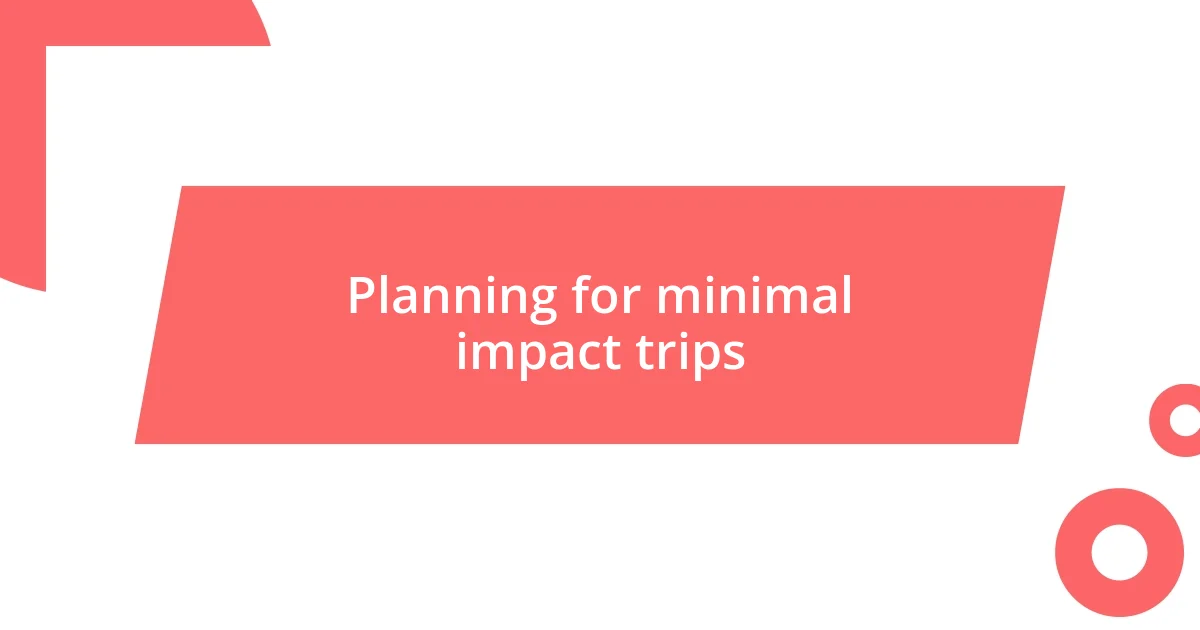
Planning for minimal impact trips
When it comes to planning for minimal impact trips, preparation really sets the stage for a responsible adventure. I always start by researching the area I’ll be visiting, checking the specific guidelines for that location. Each time I do this, it feels like digging into a treasure map—figuring out not just where to go, but how to respect and preserve the local ecosystems along the way.
Another crucial step is packing smart. I’ve learned that less is often more. On a recent hike, I opted for lightweight gear and portable food options, which allowed me to carry everything in one trip. It’s amazing how simplifying my load not only made my hike easier but also minimized waste. I can’t tell you how fulfilling it is to camp without leaving behind wrappers or unused supplies, knowing that my experience doesn’t come at a cost to the environment.
Finally, I always plan my activities to align with the Leave No Trace principles. For instance, I choose established trails and campsites, which helps preserve the natural landscape and prevents the spread of erosion. Reflecting on these choices makes me appreciate every moment spent outdoors more deeply. I sometimes sit at my campsite and marvel at how these small decisions can contribute to a larger cause—protecting the beautiful world we have to explore.
| Planning Elements | Why They Matter |
|---|---|
| Researching Location | Understand local rules to minimize environmental impact. |
| Packing Light | Reduces waste and makes traveling easier. |
| Following Leave No Trace | Protects the terrain and maintains natural beauty. |
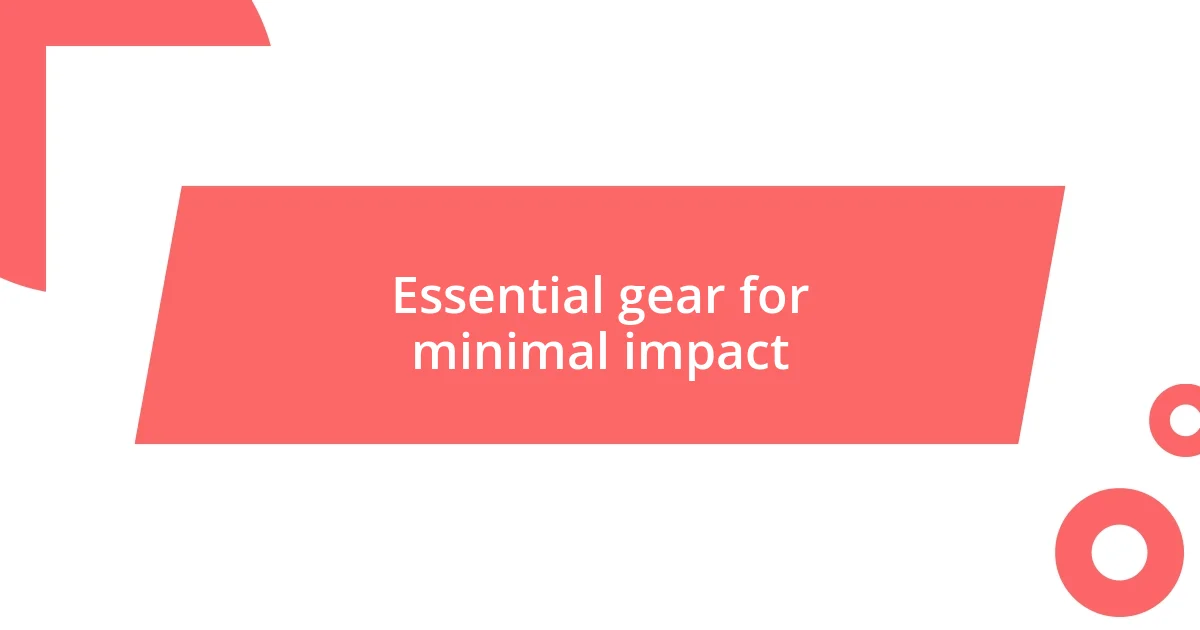
Essential gear for minimal impact
When gearing up for minimal impact camping, I’ve learned that the right equipment makes all the difference. I always opt for a compact, lightweight tent that’s easy to set up and dismantle, reducing my time spent on the ground and allowing me to leave no trace. I can still remember a trip to a secluded lake where my minimalist setup allowed me to slip in and out without disturbing the serene environment around me. Isn’t it rewarding to know that you can enjoy nature while ensuring it stays preserved?
Portable cooking gear has also become essential for me. I swear by my small, efficient camp stove that uses biodegradable fuel. I distinctly recall a rainy night in the woods when I prepared a warm meal under the shelter of my tent. The simplicity of boiling water while keeping my waste to a minimum was both comforting and gratifying. It made me think—what might we all achieve if we turned each meal into an opportunity to honor the environment?
Don’t forget about your trash management! I carry a personal waste bag alongside my gear. It seems minor, but on a recent hike, I picked up litter left by others—every little bit helps, right? Reflecting on that moment made me feel like an active participant in preserving our wilderness. So, what choices can you make today that will contribute to a smaller footprint tomorrow?
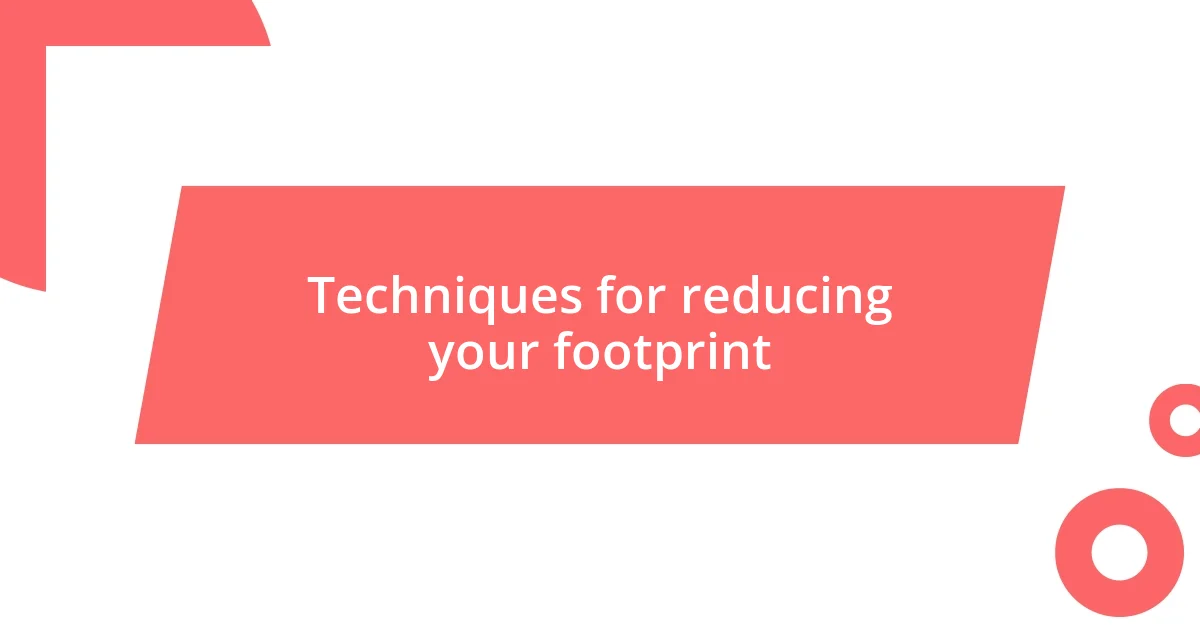
Techniques for reducing your footprint
I’ve found that one of the most effective techniques for reducing your footprint while camping is to practice meal planning beforehand. During a recent trip, I made a conscious effort to create a meal plan that included only the ingredients I needed. Not only did this help me avoid excess packaging, but it turned into a fun challenge. Would it be possible to create delicious meals from just a handful of ingredients? Absolutely! It’s a rewarding experience to savor every bite, knowing I’m minimizing waste.
Another approach I’ve adopted is using biodegradable soap when it’s necessary to clean my dishes. On an unforgettable backpacking adventure last summer, I was able to wash up at a pristine stream with a plant-based soap that wouldn’t harm the delicate ecosystem. Watching the bubbles float away made me realize how important our choices are in preserving these beautiful locations. When you think about it, isn’t it incredible how a small change can lead to a much greater impact?
Finally, I find that being mindful of my travel patterns plays a huge role in reducing my environmental impact. For example, I often combine multiple activities in one trip, like hiking in the morning and swimming in the afternoon. This not only gives me a more enriching experience, but it also minimizes my gas usage. Isn’t it fascinating how we can create our own adventures while being conscious of our environmental footprint? Every choice counts, and by combining activities, I’m contributing to a sustainable way of exploring the great outdoors.
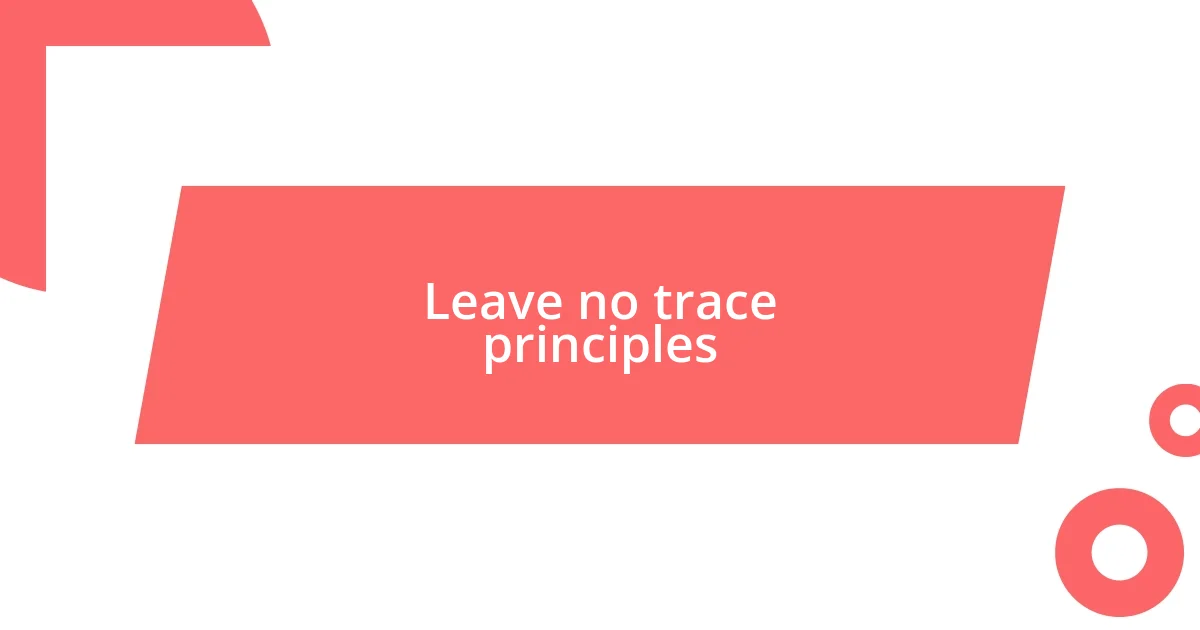
Leave no trace principles
While exploring the great outdoors, the Leave No Trace principles guide my actions and decisions. One memorable evening, I watched a campfire flicker against the darkening sky, and I realized how crucial it is to build fires in designated areas, respecting the surrounding environment. Choosing to use the established fire rings reduces the risk of damaging fragile vegetation. Have you ever experienced the joy of seeing a campsite that looks untouched? It’s that kind of beauty we need to preserve.
As a strong proponent of preserving these natural wonders, I always pack out what I pack in. I recall a hiking trip where I took an extra moment to pick up stray bits of trash left behind by others. The small efforts of one person can ripple through an entire ecosystem, creating a cleaner, healthier landscape for everyone. So, how can we each commit to making our camping spots as pristine as we found them?
Keeping wildlife wild is another essential aspect of Leave No Trace principles. One time, I happened upon a curious raccoon rummaging through a fellow camper’s food supply. It struck me how crucial it is to store food securely to prevent animals from associating humans with easy meals. How can we expect to enjoy wildlife if we inadvertently encourage them to visit campsites? It’s a delicate balance that we must respect to ensure both our enjoyment and their safety.
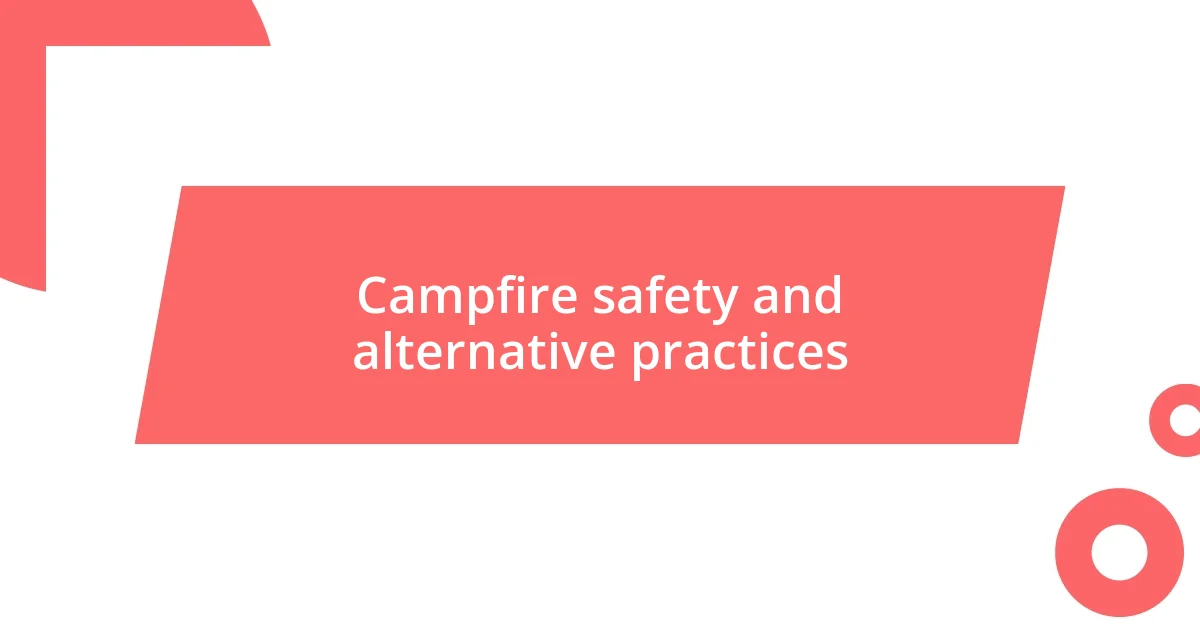
Campfire safety and alternative practices
When it comes to campfire safety, I’ve learned that preparation and respect for the environment are key. I vividly remember sitting around a fire on a chilly night, mindful of the sparks that danced in the air. I always ensure that the fire is completely extinguished before leaving. Dousing it with water, stirring the ashes, and feeling the coolness beneath my hands reinforces that sense of responsibility. How can we truly enjoy nature if we leave it in danger?
I’ve also embraced alternative practices that create a warm atmosphere without the need for an open flame. Last summer, I experimented with a portable solar lantern during a camping trip, and it was a game changer. The soft glow it provided felt magical, just like a fire, but without the environmental impact. It made me consider: why rely solely on traditional campfires when innovative solutions exist to enhance our experience?
Additionally, following the guidelines for maintaining a safe campfire area has been enlightening. I distinctly remember a night when I had to choose a spot that was both safe and away from overhanging branches. It struck me how often we overlook these details. Can you imagine the stories of future campers that could be lost due to a single careless decision? Using a fire blanket and gathering wood from the ground instead of breaking branches from living trees showed me how even small choices can collectively make a big difference.

